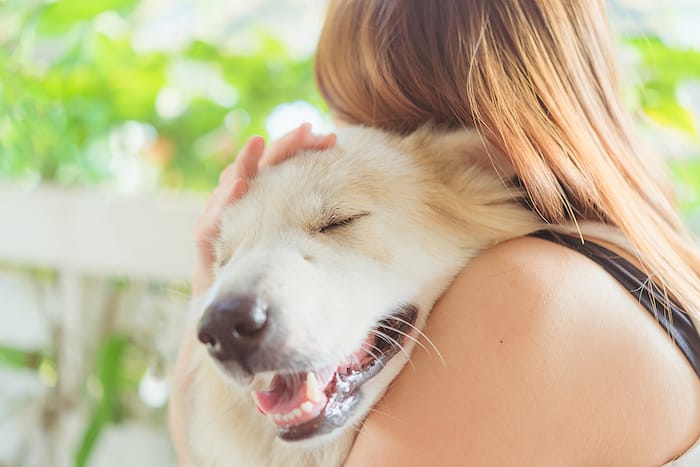Grooming your hypoallergenic dog is not only essential for maintaining their overall health and well-being but also for keeping their coat clean and free from allergens. While professional grooming services are available, you can easily groom your non-shedding dog at home with the right tools and techniques.
In this article, we will guide you through the basic steps of at-home dog grooming for non-shedding dogs, ensuring your furry friend looks and feels their best.

Dog’s Perspective
Before diving into the grooming process, it’s important to understand your dog’s perspective. Dogs are sensitive creatures, and some may feel anxious or uncomfortable during grooming sessions. To create a positive experience, introduce grooming gradually and reward your dog’s good behavior throughout the process. Approach grooming with patience, calmness, and a gentle touch to build trust and make the experience enjoyable for both you and your dog.
The Regular Clipping Method
Regular clipping is crucial for maintaining your non-shedding dog’s coat. This method involves using clippers to trim the hair to a consistent length. However, unless you have experience with grooming tools and techniques, it’s advisable to leave this task to a professional groomer. Professional groomers possess the expertise to achieve an even and aesthetically pleasing haircut while minimizing any potential discomfort for your dog.
The At-Home Method
Here are At-Home methods:
1. Brushing at Home
Start the grooming process by thoroughly brushing your dog’s coat to remove tangles and mats. Use a slicker brush or a comb specifically designed for your dog’s coat type. Brush in the direction of hair growth, applying gentle pressure to avoid causing discomfort.
2. Bathing at Home
Next, give your dog a bath using a mild, hypoallergenic dog shampoo. Ensure the water temperature is lukewarm, and lather the shampoo gently, avoiding the eyes and ears and make sure you remove tear stains on dogs. Rinse your dog thoroughly to remove all the shampoo residue and towel dry them afterward.
3. Nail Trimming at Home
Regular nail trims are essential for your dog’s comfort and overall health. Use a pair of dog nail clippers or a nail grinder to carefully trim the tips of your dog’s nails, taking care not to cut too close to the quick. If you’re unsure about how to trim your dog’s nails safely, seek guidance from a professional groomer or veterinarian.
4. Ear Cleaning at Home
Keeping your dog’s ears clean is crucial for preventing infections. Use a veterinarian-recommended ear cleaning solution and a cotton ball to gently wipe the outer ear. Avoid inserting anything into the ear canal to prevent injury.
5. Eye Cleaning at Home
To clean your dog’s eyes, use a damp, soft cloth or a specially formulated eye-cleaning solution. Gently wipe the area around the eyes, removing any discharge or debris. If you notice excessive tearing or redness, consult your veterinarian.
6. Tooth Brushing at Home
Maintaining good oral hygiene is important for your dog’s overall health. Use a dog-friendly toothbrush and toothpaste to brush your dog’s teeth regularly. Start slowly and gradually increase the duration of brushing to get your dog accustomed to the process.
7. Anal Sacs at Home
Expressing anal sacs is a procedure commonly performed by professionals, such as groomers or veterinarians. It involves emptying the anal sacs, which are small glands located near a dog’s anus. However, if you observe any signs of discomfort or irritation in your dog related to their anal sacs, it is important to seek guidance from a veterinarian for proper care and instructions.
While expressing anal sacs at home is possible, it is crucial to approach it with caution and under professional guidance. Mishandling or improper technique can lead to complications or further discomfort for your dog. Therefore, consulting with your veterinarian is highly recommended.

Caution & Considerations
When grooming your non-shedding dog at home, it’s essential to keep certain factors in mind:
- Always use appropriate grooming tools and products suitable for your dog’s breed and coat type.
- Avoid rushing the grooming process, as it can cause stress for your dog.
- Take breaks if needed, allowing your dog to relax and regroup during the grooming session.
- If you encounter any skin abnormalities, such as rashes or sores, consult your veterinarian for advice.
Conclusion
In conclusion, grooming your hypoallergenic dog at home is not only feasible but also a great way to bond with your furry companion. By following the proper techniques and utilizing the right tools, you can keep your dog’s coat healthy, clean, and free from allergens. Remember to approach the grooming process with patience, reward good behavior, and prioritize your dog’s comfort and well-being throughout the experience. Happy grooming!
Related Reading
